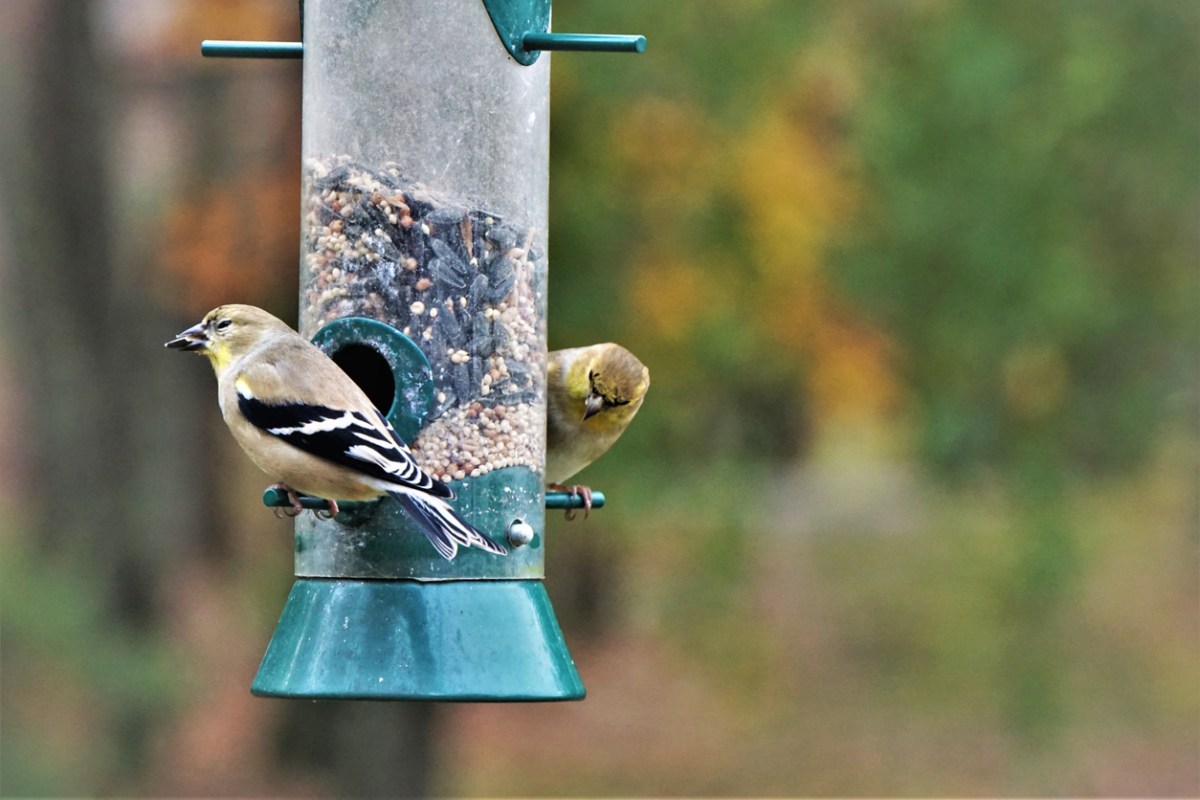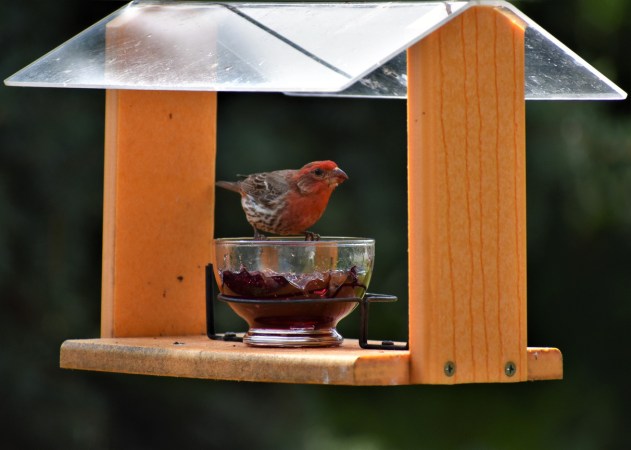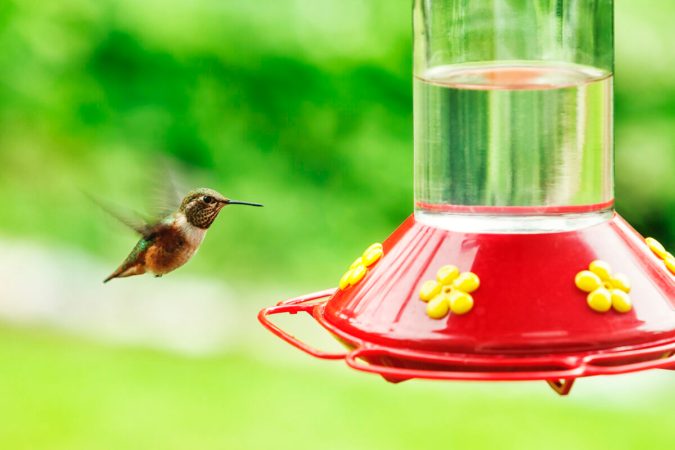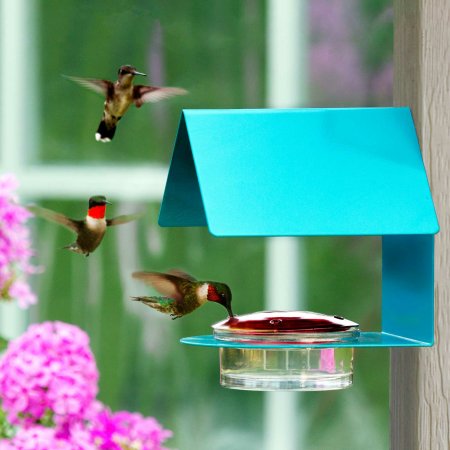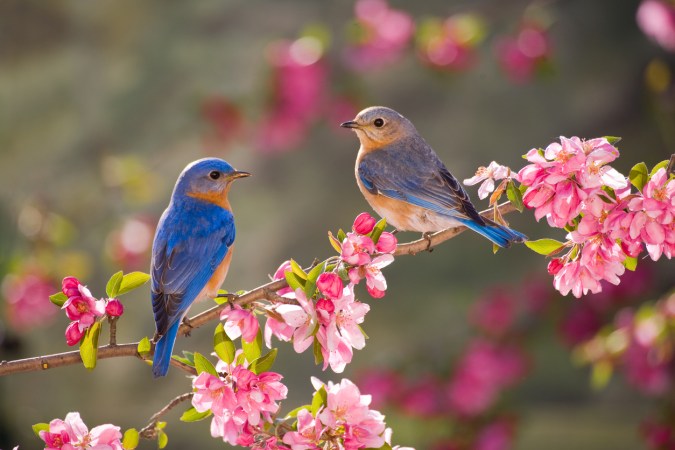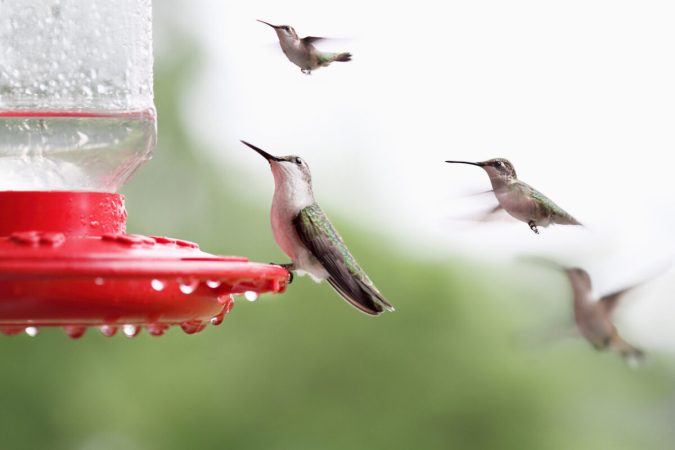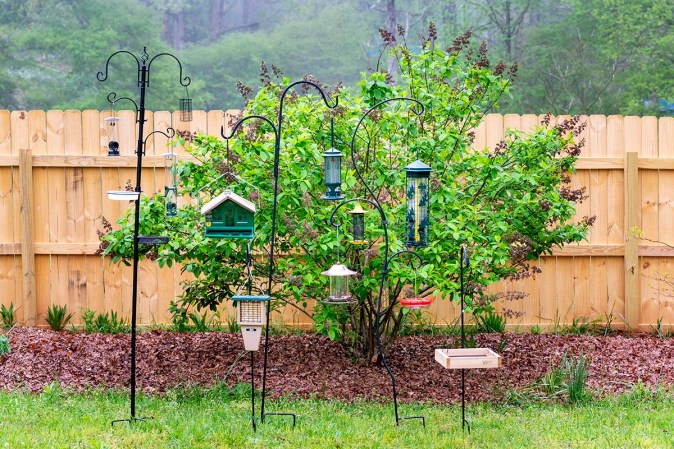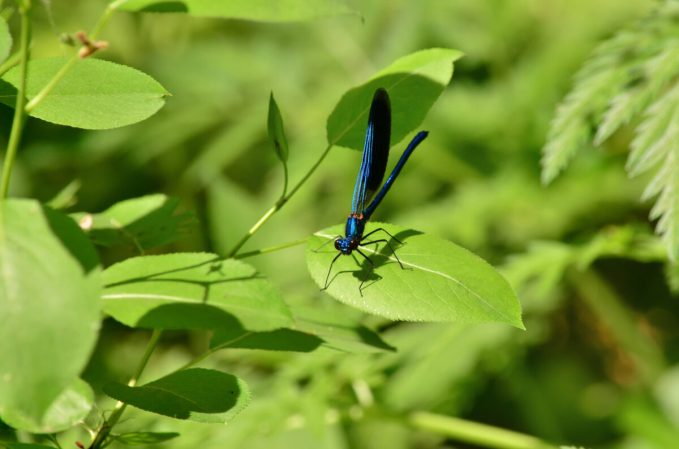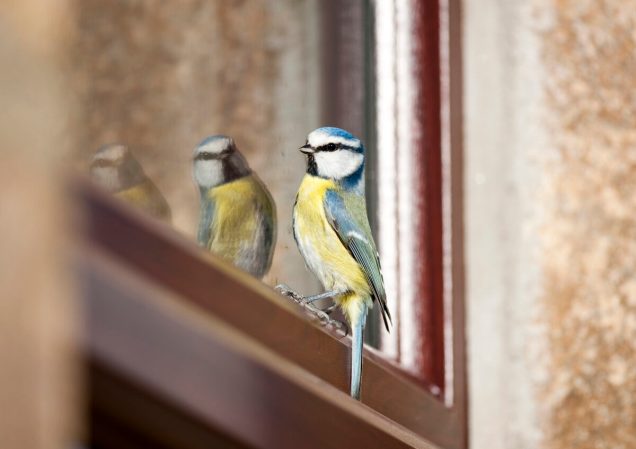We may earn revenue from the products available on this page and participate in affiliate programs. Learn More ›
It’s fun and relaxing to watch a diverse assortment of birds flit in and out of your yard, and it’s gratifying to know you’re helping them by providing food, fresh water, or a safe nesting spot. Birds bring benefits to your yard in turn, such as pest control. Many are crucial pollinators. Some are songbirds, whose whistles add an extra element of pleasure to our lives.
If you’re having trouble bringing birds to your outdoor space or just want to entice as many feathered friends as possible, we’ll show you how to attract birds to feeders with the following practical ideas.
RELATED: 27 Gorgeous Plants That Attract Hummingbirds to Your Garden
1. Start with a feeder.
If you don’t know how to attract birds to feeders, start by buying a good bird feeder—or two or three. This Perky-Pet feeder available at Amazon is a top pick in our guide to the best bird feeders. There are many types of bird feeders; some are suspended from poles or tree branches, some are attached to windows for up-close viewing, and others are placed on the ground.
Certain feeders hold different kinds of food, meaning you can appeal to an assortment of birds throughout the year. Some birds need perches while they access the food, and some foods—like nyjer (thistle) and suet—require specific kinds of feeders. Hummingbirds, for example, require special nectar feeders.
2. Don’t get squirrely.
Some enthusiasts want species exclusivity for their bird feeders: no squirrels allowed. If you prefer to keep these clever rodents from robbing bird seed, invest in a squirrel-proof feeder such as the Squirrel Buster Plus available at Amazon, which we deem the best overall in our guide to squirrel-proof bird feeders. While bird feeders are available in a wide range of shapes and sizes, squirrel-proof feeder designs use materials that squirrels can’t damage or get through.
For extra protection, add a baffle to your bird feeder or mount it on a squirrel-proof pole. Filling bird feeders with food that squirrels don’t like, such as safflower seed, nyjer seed, and white proso millet, is an effective way to attract birds but not squirrels.
3. Embrace flower power.
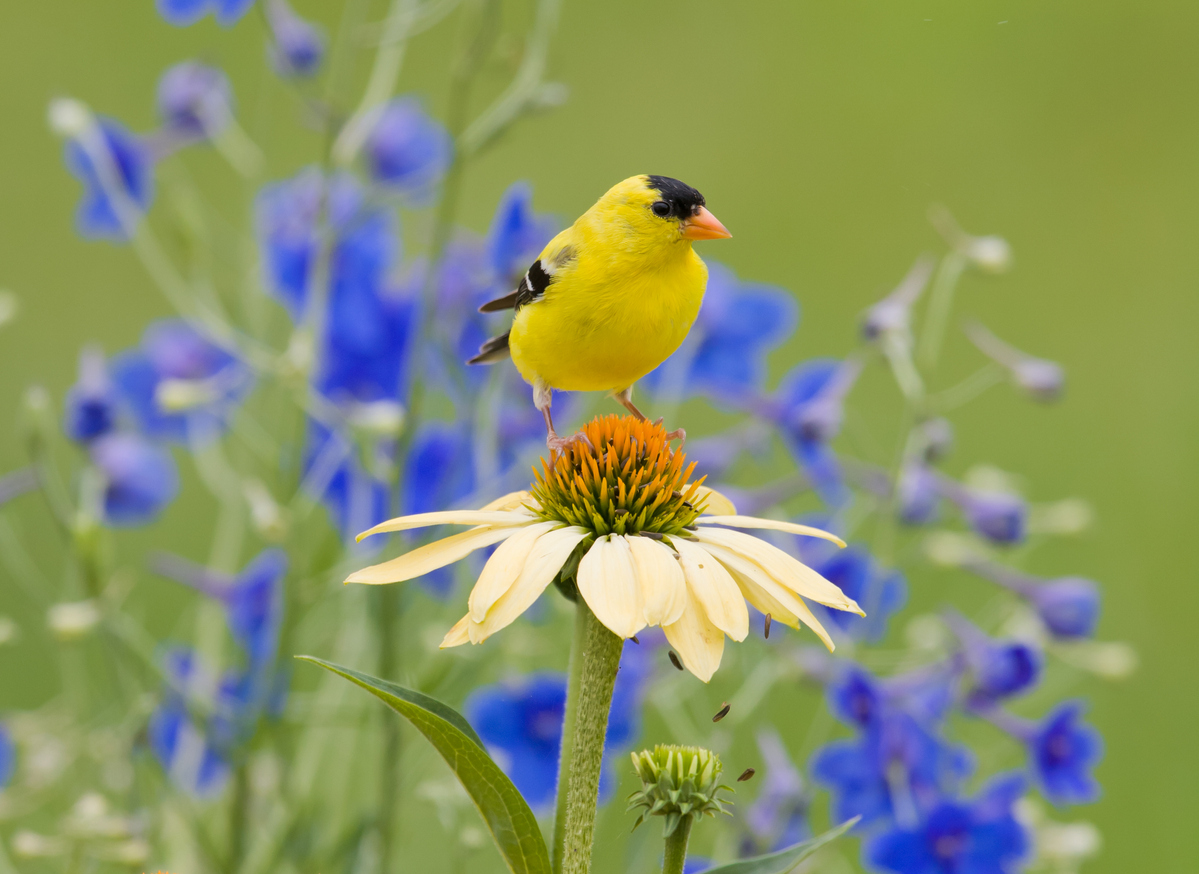
Flowering plants provide natural sustenance and encourage birds to check out your feeder as their backup. Hummingbirds and orioles love tubular flowers like fuchsia, bee balm, coral bells, and penstemon. Other flowers, like sunflowers, produce seeds birds like. Some flowers produce pollen: try honeysuckle, coneflower, and zinnias. Don’t forget to also grow fruit-bearing plants, such as cherry and plum trees, raspberry bushes, native shrubs, and grapevines—loved by brown thrashers, robins, thrushes, waxwings, woodpeckers, cardinals, towhees, and grosbeaks.
RELATED: 12 Heroic Facts About Hummingbirds That’ll Make You Want to See More in Your Backyard
4. Wet their whistles.
It’s just as important to provide water for birds as it is to offer food. In addition to quenching their thirst, fresh water provides bathing opportunities. A shallow bird bath with a flat bottom and an area for perching is best. An inch of water is all they need. Be sure to clean your bird bath regularly to prevent disease. Moving water is especially attractive to many birds, such as cardinals. If you don’t have a stream or fountain, you can add a bubbler to a bird bath.
5. Add plant protection.
Attract birds to your yard by planting cover that makes them feel safe. Add berry-producing trees and shrubs that provide food through the winter and shelter year-round, such as bayberry, winterberry holly, chokeberry, American beautyberry, serviceberry, and crabapple. Ever wonder why birds aren’t coming to your feeder? Well, your bird feeder might be too exposed. Landscape your yard with trees and shrubs for protective cover. Conifers do more than double duty by providing cover, winter shelter, nesting sites, and tree sap.
6. It’s all about location.
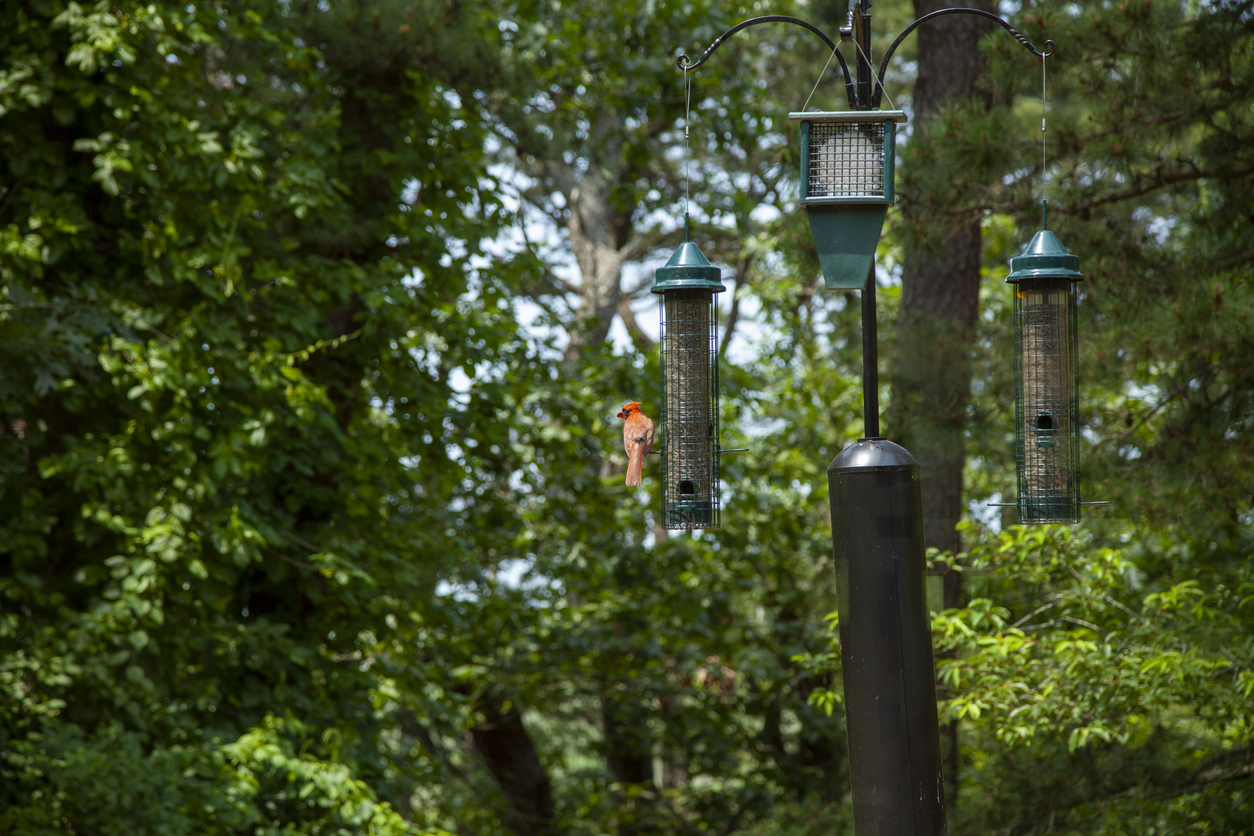
While birds will appreciate some nearby cover, you still have to place bird feeders in an open area where they can find them. Feeders should be close enough to trees and shrubs for shelter and safety, but far away enough from cover to keep squirrels from easily accessing the feeders.
Similarly, natural cover should be close enough to feeders to give birds a place to hide from predators, but not so close as to hide hawks, snakes, raccoons, and foxes looking to ambush birds at their food source. For added protection, try a Gray Bunny Heavy-Duty Deck Hook available at Amazon to keep feeders out of predators’ reach.
7. Get a ground feeder.
Some birds, such as cardinals, sparrows, juncos, and towhees, forage for food on the ground. Adding a covered ground feeder for them will encourage them to come to your yard. Place it near the protective cover of trees or shrubs, but don’t hide it from view. During the winter, be sure to keep it clear of snow and ice and make sure the feed inside remains dry.
8. Encourage nesting.
Birds nesting in your yard will partake of the offerings in your birdfeeders. In addition to providing safe harbor, certain plants and shrubs can provide good nesting spots. However, be cautious during spring pruning to avoid disturbing a nest. You can also put up a birdhouse for species that use them. Even if you don’t provide any nesting sites, you can always provide nesting materials. Not everything is safe to put out for nesting aids, including dryer lint, yarn, tinsel, plastic strips, cellophane, aluminum foil, and more unsuitable materials.
RELATED: What to Do If a Bird Flies into Your House
9. Clean up.
The question of how to get birds to come to your bird feeder has a simple answer—give them food, water, and shelter. If you want to attract birds to your yard, it’s your duty to provide all three. More than that, though, it’s your responsibility to keep your feeders, baths, and the areas around them clean to prevent feathered guests from falling ill.
To prevent bacteria and mold from growing in bird fixtures, follow this routine about every other week for seed feeders and about every other day for hummingbird feeders: Scrub feeders with a vinegar and water solution. Thoroughly rinse them with clean water and allow them to dry completely before refilling. Be sure to also clean up spilled grub and discarded hulls that have collected beneath your feeders.
10. Keep feeders full.
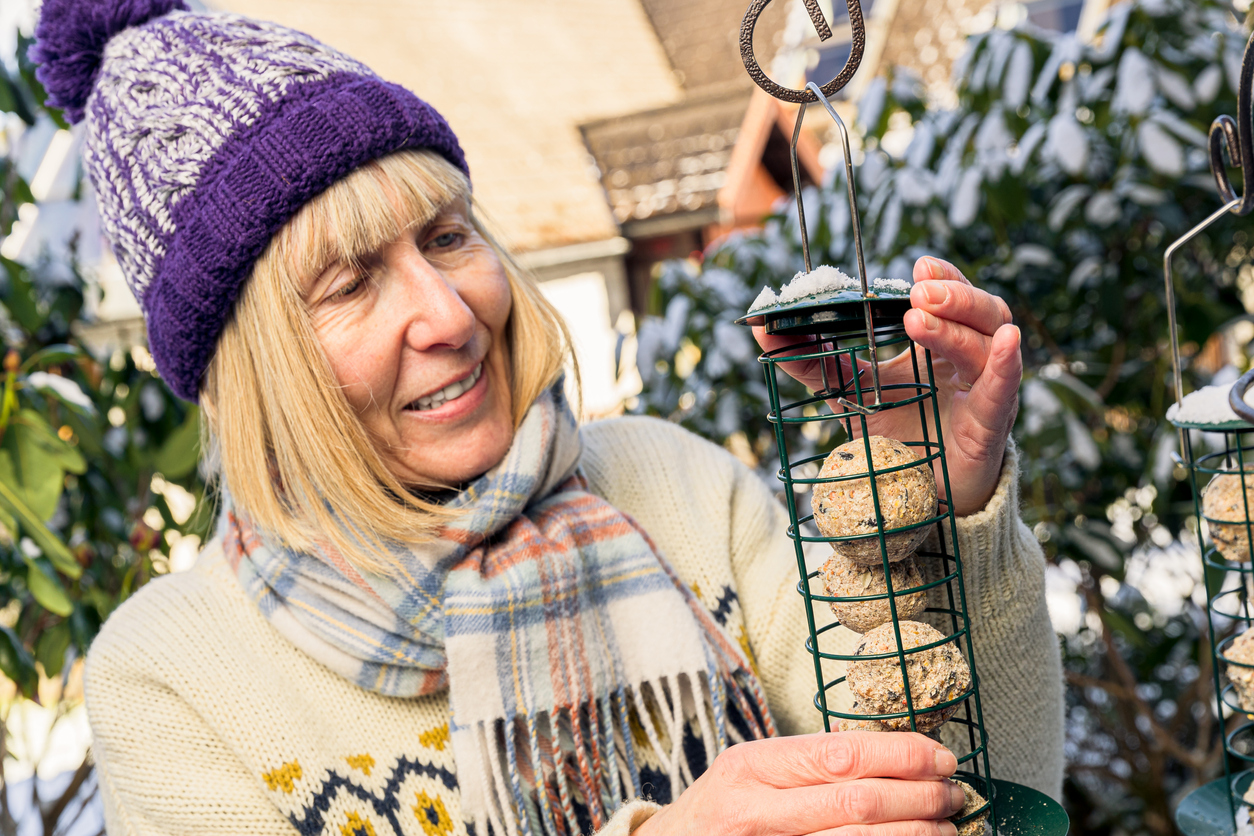
It bears repeating that you need to keep your bird feeders filled. If you don’t refill feeders routinely, birds will stop by less frequently. That can result in stale or spoiled feed, which may further discourage birds from your yard. Many bird species don’t migrate in the winter, so it’s doubly important to supply them with nutrition when their regular forage isn’t readily available in the cold months.
11. Time it right.
Not only is it important to keep the feeders full, but it also matters what time of day you fill them. Most birds forage first thing in the morning and late in the day. Especially in winter, birds need energy to stay warm overnight, so make sure their feeders are filled in the afternoon. In the morning, they’re likely to replenish lost energy at your feeders.
If you’re an early riser, refill the feeders before dawn, or at least in the early morning. Alternatively, you can fill them before you go to bed, but that could invite unwanted visitors like raccoons, skunks, and mice.
12. Help them weather the winter.
Do birds tell each other where the food is? In a sense, yes. Birds follow the flock to prime real estate and resources. According to the National Audubon Society, 60 percent of them have shifted their winter range north an average of 35 miles. That makes it even more important to support birds through the cold months, when lower temperatures make energy conservation and replenishment vital.
To do this, regularly fill clean feeders with high-quality food that appeals to as many of the 305 bird species living in North America as possible. Add a suet feeder like this option available at Amazon with suet (compact fat usually filled with avian favorites like seeds and berries) for added calories and protein. Don’t forget to provide liquid water; solar-powered bird baths like this one available at Amazon will keep it flowing and deter freezing.
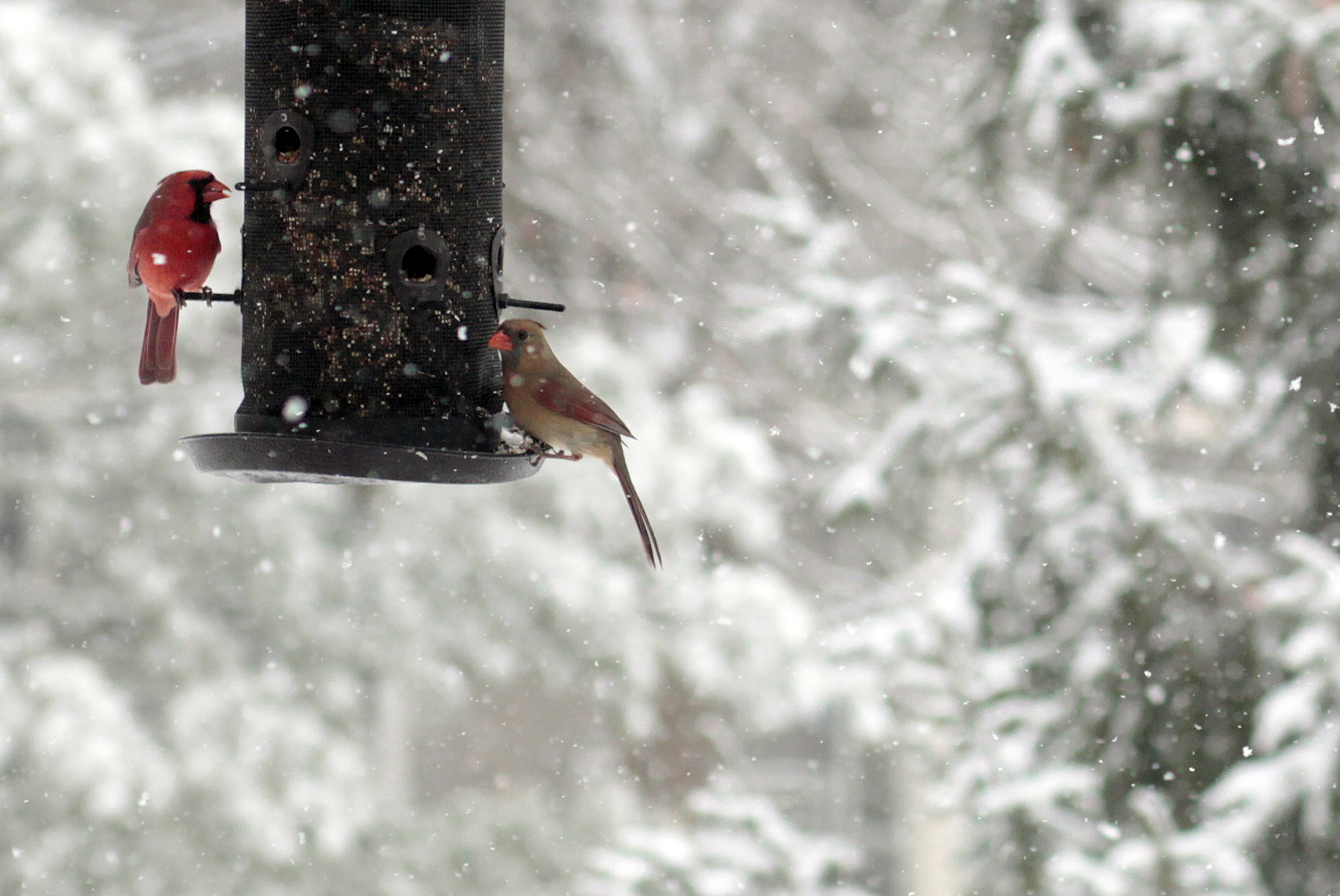
13. Make your feeders visible.
How do birds find bird feeders? By sight, of course! They have little sense of smell, so they’re on the lookout for the familiar shapes of bird feeders. If they seem unable to find your yard’s offerings, carefully consider the visibility and positioning of your feeders, and check that they’re filled with quality food, including a variety of seeds, nuts, grains, and dried fruit. You might even try sprinkling a little feed nearby on the ground to grab birds’ attention. It also helps to add other things they need, like water and shelter.

